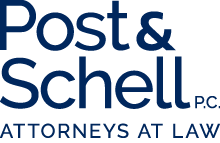Pennsylvania Supreme Court Holds the City of Lancaster's Attempt to Regulate Public Utilities is Entirely Preempted By the Public Utility Code

On August 20, 2019, the Pennsylvania Supreme Court (“the Court”) issued a 7-0 opinion holding that all of the provisions contained in an ordinance (“Ordinance 16-2013” or “the Ordinance”) enacted by the City of Lancaster (“the City”) are preempted by the Pennsylvania Public Utility Code (“the Code”). PPL Electric Utilities Corp. v. City of Lancaster, Nos. 55 MAP 2017, 57 MAP 2017 (Pa. Aug. 28, 2019). In doing so, the Pennsylvania Supreme Court affirmed over a century of case law 1 concluding that the General Assembly’s intent in enacting the Code was to provide for the uniform, statewide regulation of public utilities and public utility facilities exclusively by the Pennsylvania Public Utility Commission (“PUC”), and that public utilities should “not be subject to the varied regulation of the many cities, townships, and boroughs throughout the Commonwealth.” However, rather than base this conclusion upon the fact that the provisions of the Ordinance conflict with or deviate from the Code, the Court held that the Code was intended to occupy the entire field of regulating public utilities and, therefore, preempts all local regulation fairly encompassed by that field.
Background
Ordinance 16-2013 was enacted by the City on December 17, 2013, and granted the City certain powers over, and relatedly imposed burdens upon, public utilities that owned and operated facilities within the City. The following four provisions of Ordinance 16-2013 were at issue:
- Section 263B-3 – Authorizing the City to inspect public utility facilities for compliance with the Code and PUC safety standards.
- Section 263B-4(6) – Permitting the City to direct a utility to temporarily or permanently remove, relocate or reposition facilities for various purposes.
- Section 263D-1 – Authorizing the City to impose penalties for a utility’s violation of any provision of the Ordinance that is not within the PUC’s exclusive jurisdiction.
- Section 263B-5 – Permitting the City to impose a maintenance fee upon utilities for the occupancy and use of its municipal rights-of-way.
PPL Electric Utilities Corporation (“PPL”) 2 challenged the Ordinance and filed a petition for review in the Commonwealth Court’s original jurisdiction. PPL contended, inter alia, that the Ordinance was preempted by the Code, which reflects the legislature’s intention to impose a uniform, statewide regulatory scheme governing public utilities and vests exclusive regulatory authority in the PUC. The City filed preliminary objections and contended the Ordinance was a lawful exertion of the City’s police powers.
Commonwealth Court Decision
On October 15, 2015, the Commonwealth Court of Pennsylvania reaffirmed the uniform, statewide regulation of public utility facilities by the PUC.3 The Commonwealth Court held that several provisions of the Ordinance (i.e. Sections 263B-3, 263B-4(6), and Section 263D-1, described above) would improperly regulate public utility facilities located within public rights-of-way and therefore were preempted by the Code. Additionally, the Commonwealth Court held that the imposition of fees for maintenance of public rights-of-way (i.e. Section 263B-5) were not preempted, but must be reasonable and cannot constitute a tax.4 Post & Schell, P.C. previously provided a detailed analysis of the Commonwealth Court’s decision, which can be accessed here.
Pennsylvania Supreme Court Decision
Before the Pennsylvania Supreme Court, the City challenged the Commonwealth Court’s conclusion that the Code preempted the inspection, remove/replace/relocate and penalties provisions of the Ordinance because those provisions conflicted with the Code. PPL relatedly challenged the Commonwealth Court’s conclusion that the Code did not preempt the Ordinance’s imposition of maintenance fees.
As to the City’s challenge, the Pennsylvania Supreme Court reiterated the Commonwealth Court’s affirmation of the uniform, statewide regulation of public utility facilities by the PUC. While the City argued that the inspection, remove/replace/relocate and penalties provisions of the Ordinance did not “conflict with” or “deviate from” the Code’s correlative provisions, the Supreme Court rejected that “conflict preemption” applied. Rather, it analyzed these provisions under the doctrine of “field preemption”, which “has long governed utility regulation.”5
Under this analysis, the Court explained:
Regardless of whether conflict preemption taken in isolation would lead to a favorable result, preemption writ large is not a buffet from which a local authority may choose the dish it prefers. A winning conflict preemption argument cannot restore what field preemption already precludes. Upon finding that the legislature intended to occupy the regulatory field, we must reject all local regulation fairly encompassed by that field. Consequently, the City’s arguments notwithstanding, we need only determine whether Ordinance §§ 263B-3, 263B-4(6), and 263D-1 intrude upon the field that the General Assembly has entrusted to state law and PUC oversight and enforcement. We find that they do.
Slip op., at p. 27 (emphasis added). Moreover, the Court expressed serious concerns regarding the fashion in which a municipality might attempt to use such an ordinance to regulate public utilities, and explained:
[I]t would be naïve to imagine that a city possessed of such authority would be empowered to do nothing more than the PUC would do in its shoes, or would do it in the same manner. In granting the City discretion to conduct such inspections and decide how to pursue the abatement of Code violations, the Ordinance confers upon the City tools that might be applied in an overly aggressive or even harassing fashion. In delegating these matters to the PUC, the legislature plainly intended that discretionary decision-making be vested in one regulatory body, in furtherance of uniformity of application.
Slip op., at p. 28. Therefore, the Court affirmed the Commonwealth Court’s conclusion that Sections 263B-3, 263B-4(6), and 263D-1 of the Ordinance were preempted, but found that these provisions were preempted under the doctrine of field preemption, rather than conflict preemption.
As to PPL’s challenge, the Court rejected the Commonwealth Court’s analysis of the Ordinance’s maintenance fee. First, the Court distinguished the Commonwealth Court’s and the City’s reliance on Adams6 and American Natural Gas7 as a basis for upholding the Ordinance’s assessment fee; Adams did not involve competing regulatory schemes and American Natural Gas pre-dated the enactment of the first public utility code in Pennsylvania. Second, the Court found persuasive PPL’s argument that the imposition of an annual maintenance fee will ultimately be passed on to utility customers, and that the impact to utility customers could be significant if other municipalities imposed their own annual maintenance fees.
The Court further explained City’s maintenance fee, at least in part, seeks to recover the regulatory expense of overseeing utilities’ conduct within the City and that these costs are “materially congruent to the state-level costs embedded in the state tariff that utilities already bear.” As such, the Court held that the municipal maintenance fee constitutes a utility regulation and, therefore, is preempted by the Code in favor of the PUC’s exclusive authority to regulate public utilities.
In conclusion, the Court reaffirmed its prior pronouncement that “The State, speaking through the Public Utility Law [of 1937]...has given the [PUC] all-embracive regulatory jurisdiction over [public utility] companies…”8 and “vested in the [PUC] exclusive authority over the complex and technical service and engineering questions arising in the location, construction and maintenance of all public utility facilities.”9 Accordingly, the Court held all provisions of Ordinance 16-2013 are preempted by the Public Utility Code.
If you have any questions or wish to discuss the subject of this article, please contact David B. MacGregor at 215.587.1197 or dmacgregor@postschell.com, James J. Kutz at 717.612.6038 or jkutz@postschell.com, or Garrett P. Lent at 717.612.6032 or glent@postschell.com.
1 Citing York Water Company v. York, 95 A. 396, 396 (Pa. 1915); Duquesne Light Company v. Upper St. Clair Township, 105 A.2d 287 (Pa. 1954); County of Chester v. Philadelphia Electric Company, 218 A.2d 331 (Pa. 1966); West Penn Power Company v. Pennsylvania Public Utility Commission, 578 A.2d 75, 77 (Pa. Cmwlth. 1990), appeal denied, 593 A.2d 429 (Pa. 1991);.PECO Energy Company v. Township of Upper Dublin, 922 A.2d 996 (Pa. Cmwlth. 2007); and Pennsylvania Power Company v. Township of Pine, 926 A.2d 1241 (Pa. Cmwlth. 2007).
2 PPL was represented by Post & Schell, P.C.
3 PPL Electric Utilities Corp. v. City of Lancaster, 125 A.3d 837, 853 (Pa. Cmwlth. 2015) (en banc).
4 In reaching its conclusion, the majority rejected as speculative the arguments that the imposition of an annual maintenance fee will ultimately be passed on to utility customers, and that the impact to utility customers could be significant if other municipalities imposed their own annual maintenance fees.
5 See, e.g., County of Chester v. Philadelphia Electric Company, 218 A.2d 331 (Pa. 1966); Duquesne Light Company v. Upper St. Clair Township, 105 A.2d 287 (Pa. 1954).
6 Adams v. New Kensington, 55 A.2d 392 (Pa. 1947).
7 Kittanning Borough v. Am. Nat. Gas Co., 86 A. 717 (Pa. 1913).
8 County of Chester v. Philadelphia Electric Company, 218 A.2d 331, 332 (Pa. 1966).
9 County of Chester v. Philadelphia Electric Company, 218 A.2d 331, 333 (Pa. 1966).

